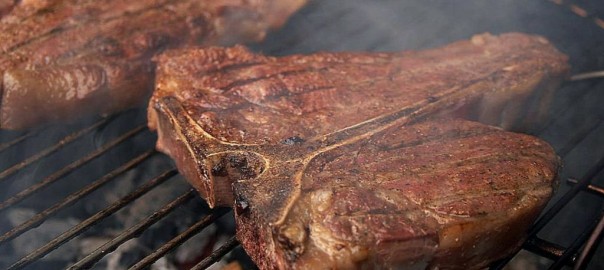
What is the Keto Diet? Explaining How It Works
What is the Keto Diet? Explaining How It Works
The ketogenic, or keto, diet is just a fancy way of saying ‘the low carb diet’, right? Wrong! Many people tend to get the two terms confused, or believe that they are simply interchangeable, but low carb and keto are definitely not the same thing. There is a lot to know about what a ketogenic diet really means, and what the differences are between a low carb diet and a true keto diet. In this article, we will dispel the myths and clear the air about the ketogenic diet to give you the solid facts about how it works. Here we go!
Low Carb Diet or Keto Diet?
The term ‘low carb diet’ doesn’t technically refer to any one particular method or set of rules to define what you eat and what you don’t, but rather is a broad generic term that describes several different diets that include an emphasis on reducing carbohydrate intake. It doesn’t necessarily dictate the other aspects of the diet, such as protein intake and other factors. It’s important to keep in mind that when you hear the term ‘low carb diet’, it’s probably being used in a general sense rather than referring to a specific set of dietary rules.
The ketogenic diet, on the other hand, is definitely low in carbs, but it has many other criteria that must be met in order to be defined as a true keto diet. So what are these other criteria that make a keto diet legit?
Defining the Ketogenic Diet
In its simplest terms, the ketogenic diet is a very low carb, high fat diet that is designed to change the body from relying on metabolizing glucose as its main source of energy, and shifts it to use ketones as a power source instead. This metabolic state is known as ‘ketosis’, and this is where the keto diet derives its name.
By its very definition, in order for a low carb diet to be considered a true ketogenic diet, it must result in the body achieving ketosis through a drastic reduction in carbohydrate intake.
Main Advantages of the Ketogenic Diet
The keto diet has many advantages, which is why it has gained such popularity. One of the main benefits, and a primary reason why any special diet is adopted, is the ability to achieve weight loss. The keto diet is an excellent way to lose weight and maintain a healthy BMI. One of the reasons the keto diet works so well at reducing weight is that the foods that are includes as part of the keto diet are very filling. This results in less hunger, less often. In fact, since high carb and sugary foods tend to have such high calorie counts, many keto dieters actually find they have more than enough ability to fill themselves up each day with the food choices they have available.
The keto diet is also effective at controlling blood sugar and insulin levels, making it a popular diet choice for managing diabetes, with many diabetics achieving even greater success with weight loss as a result. Studies have even shown that the keto diet can have such an impact on diabetes that some patients have reported less reliance on medication as a result.
(Reference: https://www.ncbi.nlm.nih.gov/pubmed/16318637)
There are many other potential health benefits to adopting a ketogenic diet, including reducing risk of heart disease, epilepsy, and even acne. However, whatever your reasons may be for considering a ketogenic diet, it is critical that you consult with your doctor and health care professionals prior to adopting any new diet in order to make sure that it is right for you.
What Foods Fit the Ketogenic Diet?
The basis of a ketogenic diet is two main factors; low in carbs and high in fat. This means that there are several foods that should be avoided as part of a keto diet, and many others that should be focused on. While this is not an exhaustive list of everything that fits on either side, let’s take a look at some of these different types of foods.
Foods to Avoid on the Keto Diet
- Sugars – Sugary foods like candy, sugary drinks and juices, desserts, etc.
- Fruits – Most fruits contain more sugar than is allowed on the keto diet
- Alcohol – Beer, coolers and sugary mixed drinks should be avoided
- Grains – Starches and flour-based foods such as breads, cereals, and pasta
Foods to Eat on the Keto Diet
- Meats and Proteins – Beef, pork (ham, bacon, etc), chicken and poultry, fish (salmon, tuna, etc), and eggs
- Cheese and Dairy – Avoid milk, but cheese, butter, and cream are ok
- Vegetables – Look for lots of greens, peppers, broccoli, zucchini, etc.
- Nuts & seeds – Walnuts, almonds, peanuts, cashews, etc.
Sugars – Sweetening Things Up with Sweeteners
Ask anyone who’s been through a Keto diet and 98% will tell you that one of the most craved things at the beginning of the diet was sugar and sweets in general. We recommend that you plan for this and find a good sweetner in advance that you can use in your coffee or tea, and for baking your own homemade treats to have on hand during your diet. Not all sweeteners are all made the same – many use artificial fillers which in addition to containing carbs, can also cause blood sugar spikes. Avoid sweeteners that contain things like maltodextrin, polydextrose, and/or dextrose. We would suggest trying Erythritol or Stevia, as they are both naturally occurring, which won’t cause blood sugar spikes, taste really close to sugar, and work very well for baking.
Read Up Before You Begin
If you’re starting to think that the keto diet might be the right choice for you, the first thing you should do is consult your doctor for approval. If they give you the ok to proceed, along with some initial guidance, the next step is to dive in to reading as many trusted keto diet resources as possible. We specifically mention the word ‘trusted’, because like any other diet or healthy living change, there’s all kinds of varying opinions on the subject. Look for trusted resources such as authors, YouTubers, bloggers, and dieticians who have a solid following and positive reputation in the community. Weigh all the info you find in order to make informed decisions that are best for you. It’s a learning curve, for sure, but you’ll get in to the groove quickly if you stick to the proven essentials.
Read up on other people’s experiences so that you have some baseline of what to expect when you start out. Here’s a great story from Brigid at MindBodyGreen.com that details her experience on the keto diet, and how her expectations were a bit different from the reality. Everyone will approach it a bit differently, and that’s just the way it goes. No two people have the exact same lifestyle or dietary needs, but take what works from other peoples’ stories and work them in to a plan that helps you most.
Conclusion
Going keto is a big commitment, but the payoff can be even bigger if you do it right. The health benefits have been proven, and there are tons of resources available to help stay informed and learn the tricks of the trade to make going keto easier than it’s ever been. We certainly hope that you’ve found this article interesting. If you do decide to go keto, we wish you the best of luck with it, and know that we’re always here to help deliver great quality food products and helpful advice whenever you need it.






